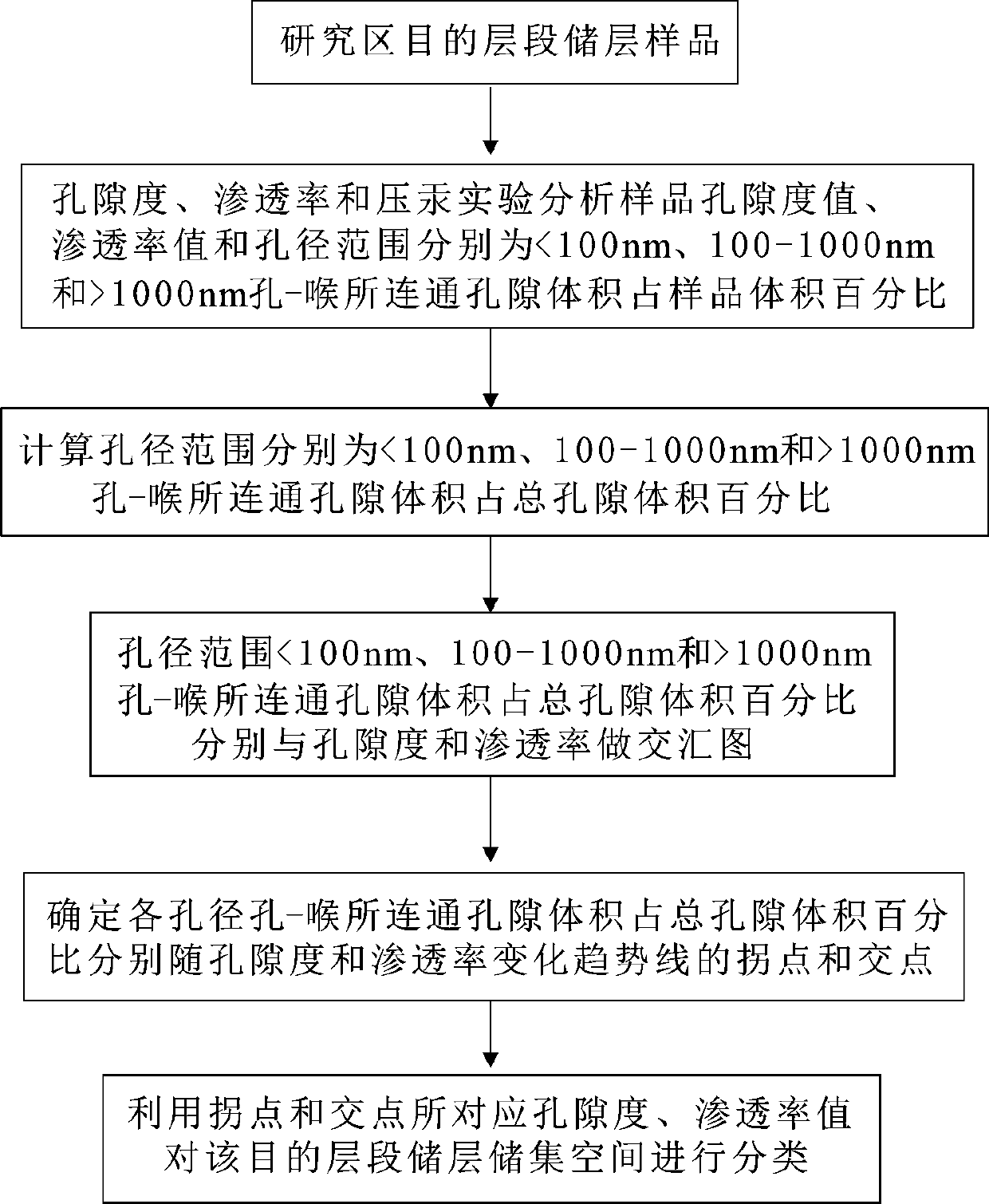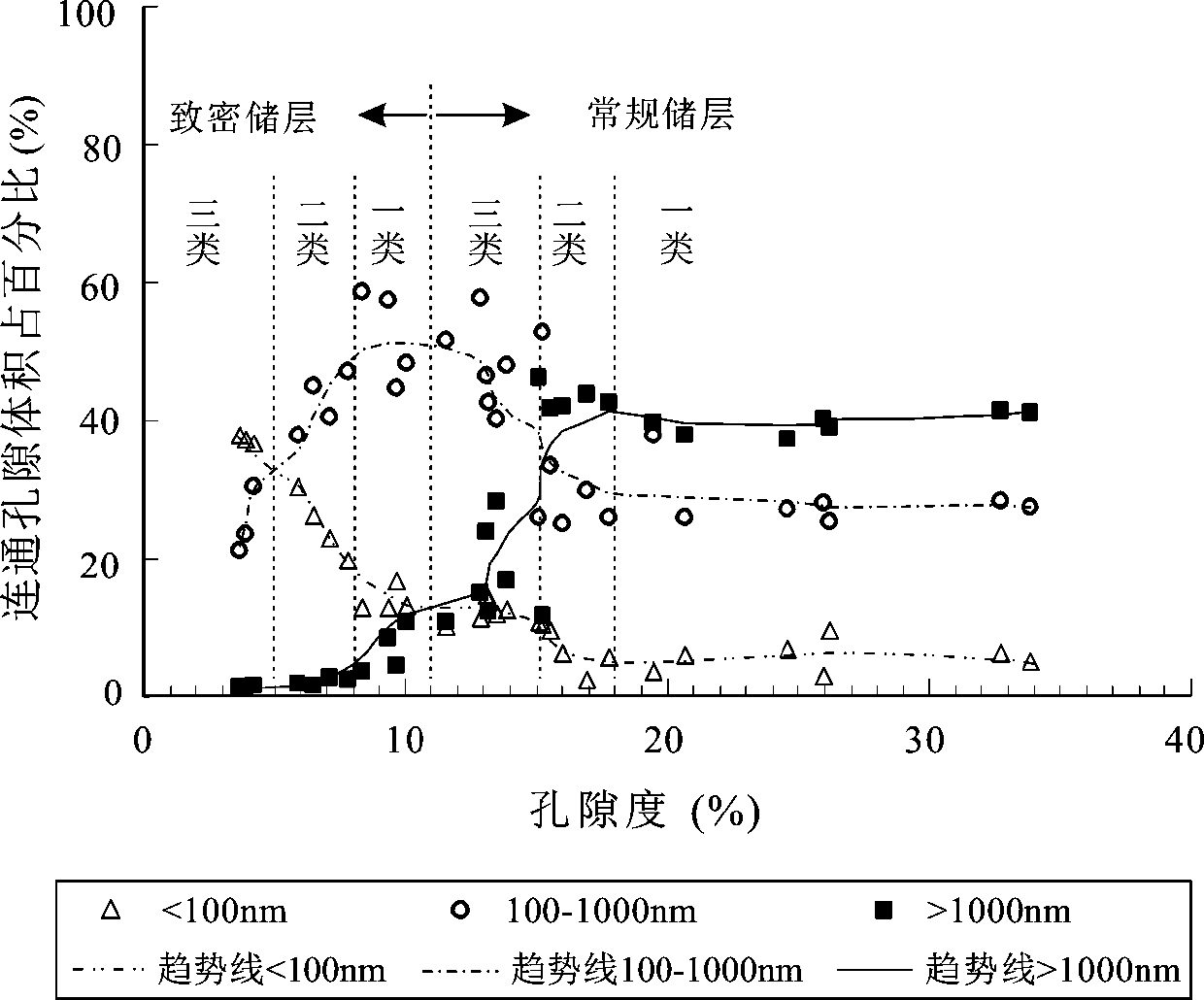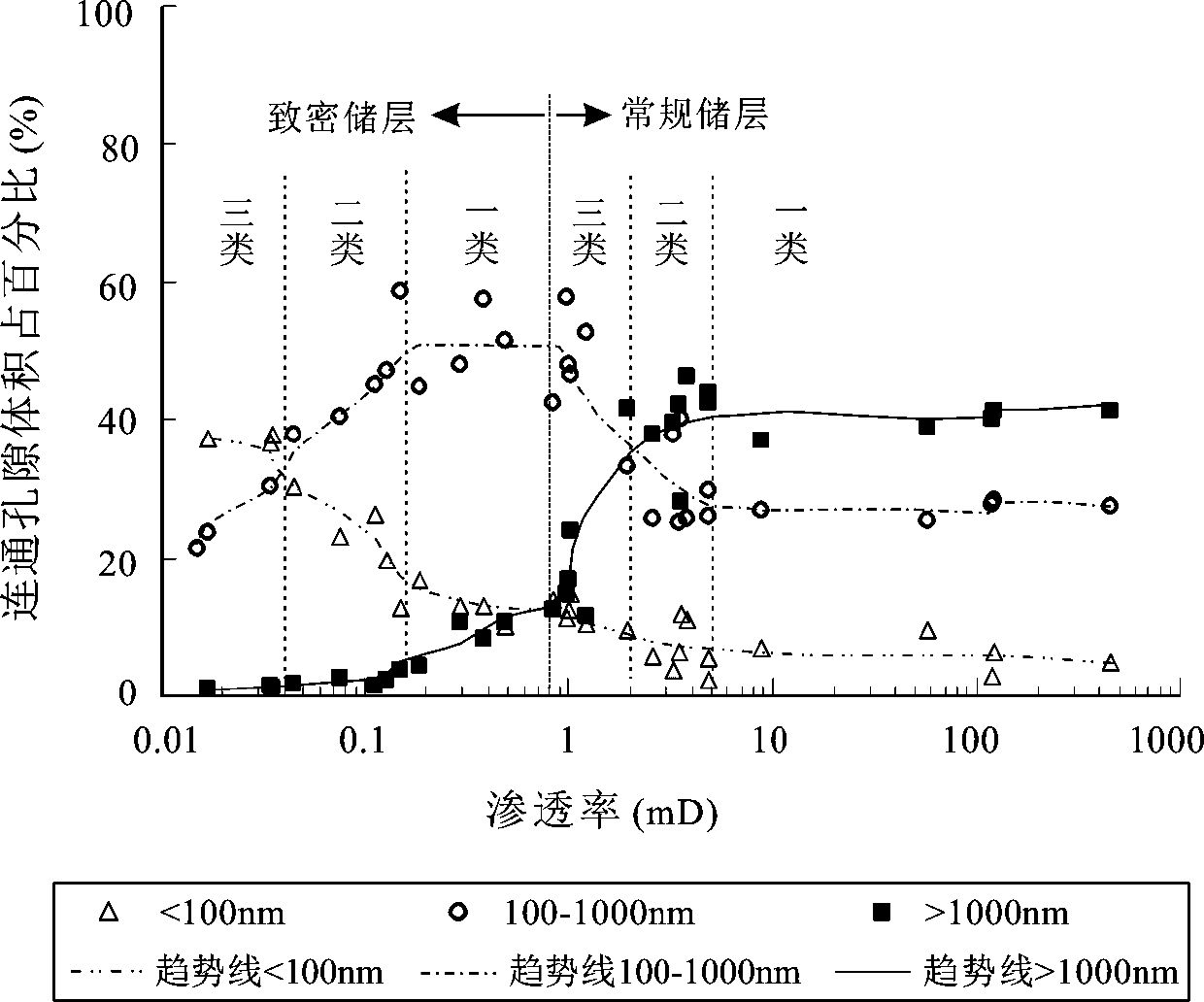Method for classifying storage spaces of compact reservoir and conventional reservoir
A technology for tight reservoirs and classification methods, applied in the direction of suspension and porous material analysis, analytical materials, permeability/surface area analysis, etc., to achieve the effect of low cost and easy operation
- Summary
- Abstract
- Description
- Claims
- Application Information
AI Technical Summary
Problems solved by technology
Method used
Image
Examples
Embodiment 1
[0017] Embodiment 1: as figure 1 Said, a method for classifying storage space of tight reservoirs and conventional reservoirs, comprising the following steps;
[0018] Step 1: Perform porosity, permeability and mercury intrusion experiments on 30 samples of reservoirs in the target section of the study area, and obtain the porosity, permeability and the volume of connected pores between pores and throats of different pore sizes in the sample volume. The results are shown in Table 1.
[0019] Table 1
[0020]
[0021] Step 2: Calculate the ratio of the pore diameter range of 1000nm pore-throat connected pore volume to the sample volume percentage and the porosity value, and obtain the pore diameter range of 1000nm pores -The percentage of the pore volume connected by the throat to the total pore volume, the results are shown in Table 2.
[0022] Table 2
[0023]
[0024] Step 3: use the pore diameter range 1000nm pore-throat connected pore volume percentage of the tot...
PUM
 Login to View More
Login to View More Abstract
Description
Claims
Application Information
 Login to View More
Login to View More - R&D
- Intellectual Property
- Life Sciences
- Materials
- Tech Scout
- Unparalleled Data Quality
- Higher Quality Content
- 60% Fewer Hallucinations
Browse by: Latest US Patents, China's latest patents, Technical Efficacy Thesaurus, Application Domain, Technology Topic, Popular Technical Reports.
© 2025 PatSnap. All rights reserved.Legal|Privacy policy|Modern Slavery Act Transparency Statement|Sitemap|About US| Contact US: help@patsnap.com



